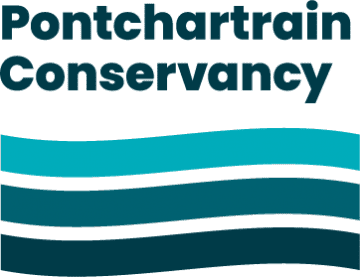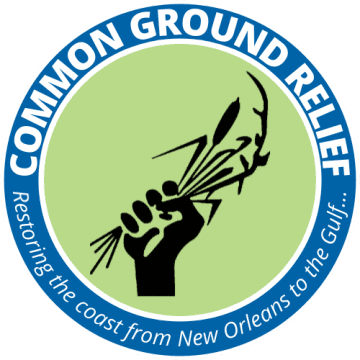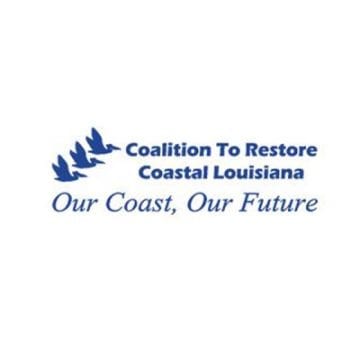Ogden Museum of Southern Art
925 Camp St
New Orleans, LA 70130
504.539.9600 | HOURS
925 Camp St
New Orleans, LA 70130
504.539.9600 | HOURS

Born in 1947, John Taylor has explored and celebrated the Bayou Bienvenue Wetland Triangle his entire life. The only part of the Central Wetlands system that is located in the Lower 9th Ward of New Orleans, the wetland was once a place for the community to fish, catch turtles, go crawfishing and, for the children of the area, a magical place to explore. Cypress wood harvested from the swamp was used to build many of the homes that are still standing in the neighborhood today. As a boy, Taylor collected herbs and roots from the wetland and sold them to make money. Later, his dream to become a game warden was dismissed when he was told that there were no Black game wardens and that he should pursue other work. Consequently, Taylor dropped out of school and spent his time learning about the ecology and wildlife of the wetlands on his own.
Today, Taylor is not only a naturalist, but also a talented artist. His father taught him to whittle and, as a child, Taylor would hang around and carve with him instead of going out to play. As an adult, Taylor uses a simple utility blade and whittles on his porch every day, creating walking sticks made of driftwood collected from the wetlands and the river.
“The materials that I use, mostly driftwood, come from the swamps and wetlands that I walk through every day. Driftwood often has its own unique form that has been shaped by the water, so I help the wood express itself and let the beauty that is already there present itself… I am somewhat of an environmentalist, and I hope that if people see beauty in my art, which is derived from the natural environment, that they will find beauty not only in my art but in the place from which it comes.” [1]
After a trip to Haiti sponsored by LSU, Taylor also acquired an interest in landscape photography. Taylor now has a large portfolio of work, documenting the flora and fauna that he visits every day. He believes creating art is a kind of meditation.
Over his lifetime, Taylor has witnessed the 400-acre Bayou Bienvenue Wetland Triangle transform from a vibrant freshwater cypress-tupelo swamp to a ghost swamp of brackish water. What used to be an old-growth swamp filled with cypress trees, water lilies and freshwater wildlife, such as fish, alligators, otters, birds and crawfish, is mostly open water today. Taylor observed that the swamp “used to be so thick with cypress trees that my brother and I boated it without paddles. We just grabbed onto trunks and pulled ourselves forward.”[2] However, in the early 1960’s, a newly built deep water shipping channel named the Mississippi River Gulf Outlet (MRGO), allowed saltwater to encroach into the wetland. Consequently, many species died, such as the cypress trees Taylor remembers so fondly, along with numerous other species that had, up until then flourished, in the environment’s brackish water.
There is also an ongoing effort to restore the Bayou Bienvenue Wetland Triangle to its natural state, and with the closure of the shipping channel post-Katrina, Taylor has seen a resurgence of the wetlands. A historian, storyteller and now a staunch advocate for wetland restoration, he has spoken to hundreds of visitors and locals about the loss of protective wetlands and how it made his community more vulnerable to the levee failure and surge of Hurricane Katrina. Using his voice and his art, he continues this work, so that generations to come may also have access to the unique environment he holds so dear.
Coastal Louisiana is made up of millions of acres of wetlands built over thousands of years by the Mississippi River. As floodwaters deposited huge amounts of sediment at the river’s delta, the new land ultimately formed a coastal ecosystem that makes up 40 percent of the wetlands in the lower 48 states. Louisiana’s wide array of coastal habitats are home to millions of birds, fish and other wildlife, including endangered or threatened animals like the Louisiana black bear, piping plover and green sea turtle. The wetlands also protect the homes of millions of people in South Louisiana. The coast’s unique culture is made up of people whose way of life is tied to the bayous and nearby wetlands, including Native Americans, Acadians (Cajuns), Creoles and other peoples who have settled here from all over the world.
The wetlands that make up the Mississippi River Delta are an extremely valuable resource that provide critically important regional and national services: providing seafood and wildlife for us to enjoy; improving water quality by filtering out pollutants and absorbing excess nutrients; replenishing aquifers; controlling erosion; and helping to dissipate storm surges.
At one time, there were extensive wetlands around New Orleans and other coastal communities that provided a natural resilience to storms. But the amount – and strength – of Louisiana’s wetlands has diminished drastically in the last century. Today, coastal Louisiana is losing 24 square miles of wetlands each year—roughly equivalent to a football field every 100 minutes. Since the 1930s, Louisiana has lost an area of coastal land equal to the size of the state of Delaware.
Wetland loss occurs because of both manmade and natural causes. Subsidence (natural sinking) and wave erosion are natural processes that can weaken and decrease wetlands over time. Humans cause wetland loss with the construction of river levees, which restrict the flow of river water, sand and mud into adjacent wetlands and stop the natural land-building process. Other human causes of land loss include channels, canals and dams. The Mississippi River Gulf Outlet (MRGO) was a massive shipping channel completed in the 1960s that brought salt water into the freshwater wetlands, killing the trees, eroding the land and destroying tens of thousands of acres of protective wetlands that buffered communities like the Lower 9th Ward.
John Taylor witnessed the near-death of the beautiful and protective cypress swamp surrounding his community after the MRGO was constructed. During Hurricane Katrina, due in part to the wetland loss caused by the MRGO, the levees along the channel were decimated by storm surge, leading to catastrophic flooding of surrounding communities.
Hurricane Katrina underscored the importance of a healthy system of wetlands between New Orleans and the Gulf. Wetlands serve as nature’s first line of defense by absorbing much of the storm surge caused by hurricanes.
Today, the good news is that there are solutions at hand and restoration projects moving forward to help ensure the river delta is safe and sustainable for people and wildlife. National Wildlife Federation is a longtime advocate of coastal Louisiana restoration. They work with partner organizations and community leaders like John Taylor to advance landscape-scale, sustainable coastal projects. One of the keys to our success will be steady support from every person who cares.

The National Wildlife Federation, America’s largest and most trusted conservation organization, works across the country to unite Americans from all walks of life in giving wildlife a voice. NWF has been on the front lines for wildlife since 1936, fighting for the conservation values that are woven into the fabric of our nation’s collective heritage. To restore the Mississippi River Delta, NWF works to expedite the design and implementation of large-scale initiatives that restore the Mississippi River’s natural capacity to build land, ensure the safety of communities and businesses in the river delta by advocating for hurricane protection that includes coastal restoration and non-structural measures, and create sustained national and state funding and political will to move restoration from plan to action.
Learn More & Get Involved
Pontchartrain Conservancy’s mission is to drive environmental sustainability and stewardship through scientific research, education, and advocacy.
Learn More & Get Involved

Common Ground Relief empowers environmental and community stewardship by mobilizing volunteers for coastal restoration projects, providing environmental education to learners of all ages, building relationships among stakeholders and providing direct need-responsive mutual aid.
Learn More & Get Involved
Stories are powerful tools that unite and inspire us, even when we’re apart. This project will allow us to shine a light on and share just how important Louisiana’s coast is to each of us. By participating in the Restore #OurCoast project, you can help motivate others to get involved and educate decision-makers to prioritize our coast so future generations will have their own stories to tell. Whatever your connection, Louisiana’s coast needs your voice to help protect its future. With your stories, we can get beyond the statistics and maps, bring the places we love across our coast to light and put faces to the many who love Louisiana and want action taken on coastal restoration. To record your story of #OurCoast go to:
Mississippi River Delta.org
The Coalition to Restore Coastal Louisiana provides opportunities for you to take action on issues that affect coastal protection and restoration. Volunteer in hands-on restoration projects, voice your opinion on legislation and stay informed when you sign up below.
[1] “About John W. Taylor,” Joan Mitchell Foundation, 2018, https://www.joanmitchellfoundation.org/john-w-taylor.
[2] Susan Buchanan, “Support for Lower Ninth Ward swamp grows,” The Louisiana Weekly, 3rd December, 2012 http://www.louisianaweekly.com/support-for-lower-ninth-ward-swamp-grows/.